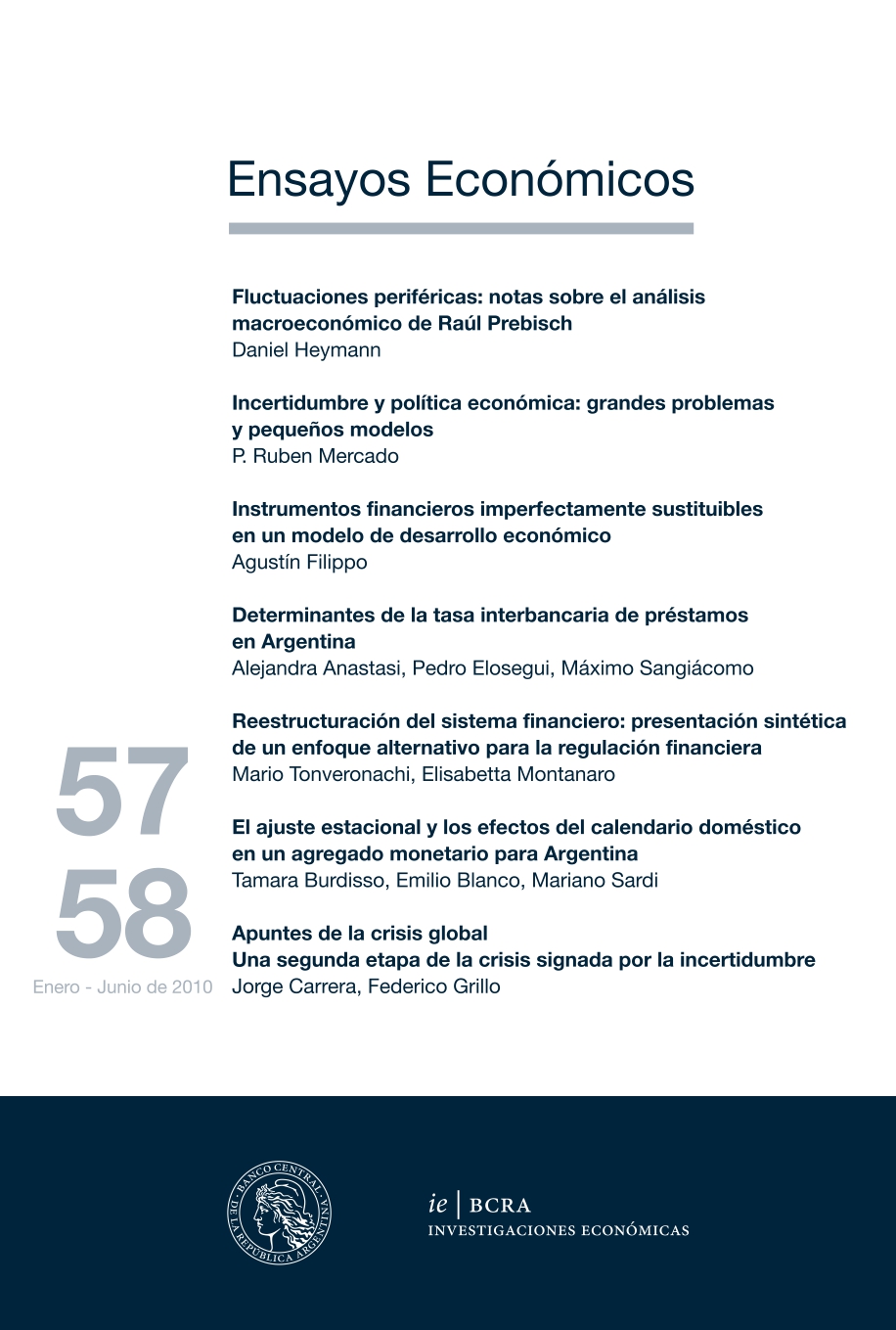Seasonal Adjustment and Local Calendar Effects in an Argentina's Monetary Aggregate
Keywords:
Calendar Effects, Monetary Aggregates, Seasonal AdjustmentAbstract
The presence of seasonal fluctuations (regular behavior along the year related to weather or institutional factors) invalidates monthly (quarterly) comparisons. In turn, since inter-annual variations depend on the comparison basis being used, they could provide very little information to the short-term analysis. The purpose of this document is, on the one hand, to underline the need of using time series adjusted for seasonality and for calendar effects in the short-term analysis and, on the other hand, to show an application of seasonal adjustment to Bills & Coins (B&C) time series of Argentina in the period 1992-2007. The main contribution of this application, if compared to seasonal adjustments made before, lies in the fact that it incorporates for the first time the local calendar into the seasonal analysis, in addition to taking advantage of other attributes of the seasonal adjustment such as the ad-hoc length of the seasonal and trend-cycle filters which provide a more appropriate adjustment to the data observed in the Argentine economy. The role of the calendar effects to explain the seasonal contribution turned out to be statistically significant though of relative economic importance, with the exception of the month of December. Regarding the seasonal component, the main source behind seasonality has not been modified in the period under analysis. However, the intensity of the seasonal component has decreased. The reasons could be linked to the bankarization process and the incorporation of new technologies in recent years.
JEL classification: C40 ; E50




